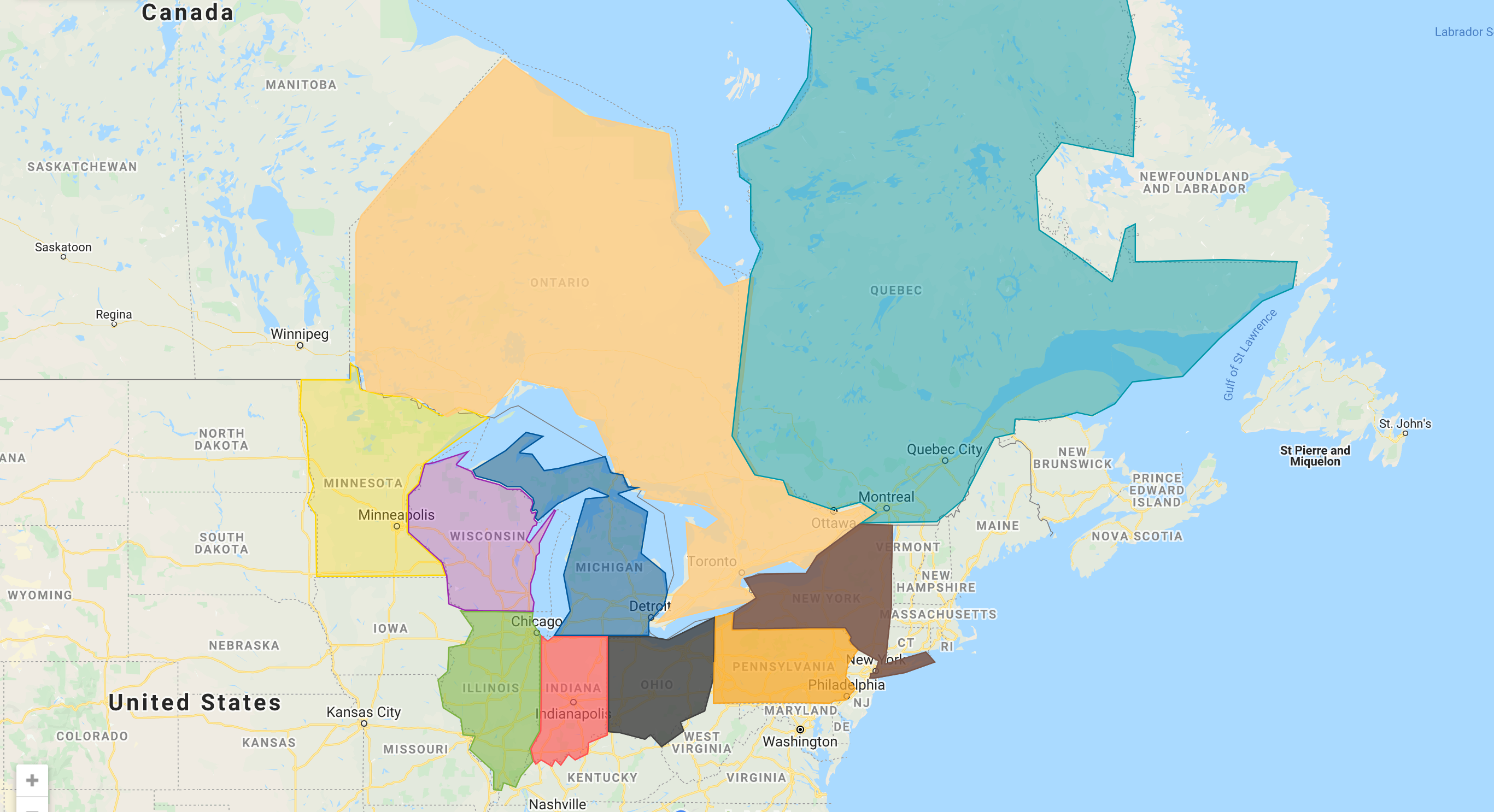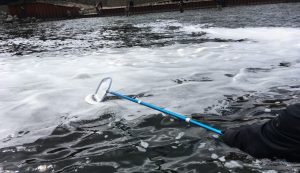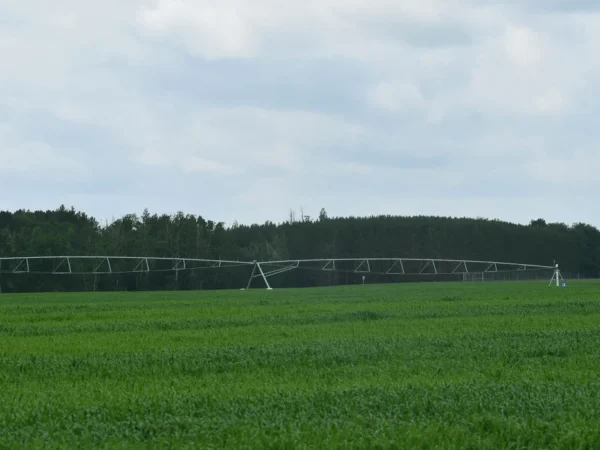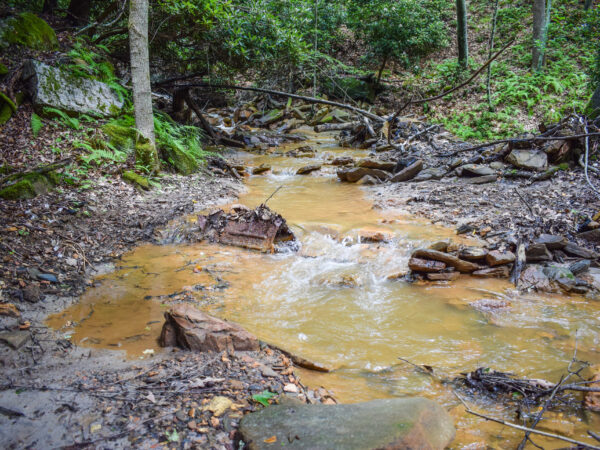
Last updated Feb. 23, 2021.
PFAS, short for per- and polyfluoroalkyl substances, are a group of widespread man-made chemicals that don’t break down in the environment or the human body.
The chemicals are used in waterproof fabrics, nonstick cookware, food packaging and more. They’ve also been found in sources of water around the U.S.
An interactive map of PFAS sites across the U.S. from the Environmental Working Group and Social Science Environmental Health Research Institute at Northeastern University is available online HERE.
The U.S. Environmental Protection Agency has a health advisory levels set for PFOA and PFOS. On Feb. 22, 2021, the EPA announced it was reproposing the Fifth Unregulated Contaminant Monitoring Rule “to collect new data on PFAS in drinking water” and reissuing “final regulatory determinations for perfluorooctanoic acid (PFOA) and perfluorooctanesulfonic acid (PFOS) under the Safe Drinking Water Act.”
While the agency works on developing other regulations and remediation options for PFAS, individual states have been taking action and developing their own drinking water standards for PFAS.
Watch Great Lakes Now’s latest updates on the PFAS situation in the Great Lakes region on our monthly show:
Illinois
Actions:
The Illinois Environmental Protection Agency has a webpage on PFAS.
In September 2020, the IEPA announced it would conduct a statewide investigation into the presence of PFAS in all 1,749 community water supplies in Illinois. It is expected to take 12 to 15 months to complete.
A bill—the PFAS Reduction Act—is pending in the Illinois Senate. The bill would ban PFAS-containing firefighting foam and food packaging containing PFAS and require a survey of fire departments.
Standards:
IEPA stated on its site that it is drafting and will propose to the Illinois Pollution Control Board new groundwater quality standards for PFAS chemicals.
The statewide investigation into PFAS contamination levels in Illinois is the beginning of the IEPA’s process to develop Maximum Contaminant Levels for PFAS.
Indiana
Actions:
The Indiana Department of Environmental Management has a webpage on PFAS.
Beginning in February 2021, IDEM is monitoring all community public water systems in the state for PFAS.
Sampling at military locations around the state has not turned up concerning results, according to the website.
Also according to the website, IDEM will also be partnering with the Ohio River Sanitation Commission, which will sample the Ohio River to determine background levels of these contaminants in the river.
Standards:
IDEM has published screening levels for three PFAS compounds—perfluorobutane sulfonic acid, perfluorobutanesulfonate and potassium perfluorobutane sulfonate—listed in Table A-6 of its screening levels guide. The screening levels cover levels for residential soil exposure and residential tap water.
According to the IDEM website, “IDEM’s current policy calls for publication of PFAS screening levels following U.S. EPA publication of the same. In 2019, the U.S. EPA provided recommendations on interim cleanup recommendations to address groundwater contaminated with PFOA and/or PFOS and sought public comment on these recommendations in the summer of 2019; they are moving forward with the development of enforceable levels for PFOA and PFOS.”
“IDEM is also monitoring the U.S. EPA’s progress as they evaluate regulatory standards for additional PFAS,” Barry Sneed, IDEM’s public information officer, said in an email statement to Great Lakes Now.
Where to get local PFAS News:
Indiana Environmental Reporter
Michigan
Actions:
The Michigan PFAS Action Response Team was created as a temporary entity in 2017. It was then established in February 2019 as an enduring advisory body by an executive order from the governor to coordinate research on, response to, communication on, mitigation of and mediate inter-agency cooperation relating to PFAS.
MPART has a weekly newsletter with updates and press releases that anyone can subscribe to online.
Click HERE for an interactive map showing PFAS sites in Michigan, maintained by the Department of Environment, Great Lakes, and Energy.
Standards:
In January 2018, Michigan adopted the U.S. EPA’s lifetime health advisory levels for PFAS.
In April 2019, the state adopted a set of stricter screening levels for PFAS in drinking water while stricter official standards were developed.
In February 2020, the state’s Environmental Rules Review Committee approved a draft of a maximum contaminant level for PFAS in drinking water.
The new levels took effect Aug. 3, 2020.
Where to get local PFAS News:
Minnesota
Actions:
The Minnesota Pollution Control Agency rolled out Minnesota’s PFAS Blueprint in February 2021 for preventing, managing and cleaning up PFAS in the state.
In the East Metro area of the Twin Cities, the community public water supplies of five cities—Oakdale, Lake Elmo, Woodbury, Cottage Grove, and St. Paul Park—are being monitored.
Detailed information on PFAS Sites in Minnesota can be found HERE on the Minnesota Department of Health website.
More than 1,300 drinking water advisories for private wells in the East Metro area have been issued. An MDH map of advisories is available online. An interactive map of private well sampling areas is available online as well for property owners to see if their well should be tested.
More information about PFAS around the state and actions being taken is available online from MDH.
Standards:
MDH has its own state drinking water standards set for PFAS, stricter than the current federal levels.
Where to get local PFAS News:
New York
Actions:
A statewide PFAS survey is ongoing to identify what areas might have potential PFAS contamination.
Remediation is being taken in areas with identified PFAS contamination, including the Hoosick area.
The Water Quality Rapid Response Team was formed in February 2016 to identify and investigate water quality issues, including PFAS contamination. In April 2017, the governor signed the $2.5 billion Clean Water Infrastructure Act of 2017 to upgrade drinking water and wastewater infrastructure, address contaminants and evaluate inactive solid waste sites to determine potential PFAS impacts to drinking water sources nearby.
The New York Department of Environmental Conservation has an ongoing collection program for removal and disposal of PFAS-containing firefighting foam from fire departments around the state.
Starting March 2017, various PFAS were added to the list of hazardous substances regulated by the state for chemical bulk storage.
Standards:
The New York Department of Health has a set of proposed maximum contaminant levels.
The state’s Public Health and Planning Council voted to approve and finalize those new standards. The regulations are now waiting on approval from Health Commissioner Dr. Howard Zucker.
Ohio
Actions:
A statewide action plan was ordered by the governor in September 2019 and then released in December 2019.
As part of the action plan, the Ohio EPA tested Ohio’s 1,542 public water systems. The test results are available at Ohio’s website on PFAS.
Click HERE for an interactive map showing the sampling status and test results thus far.
Standards:
Currently, Ohio’s PFAS drinking water standards are based on the U.S. EPA health advisory levels.
Where to get local PFAS News:
Pennsylvania
Actions:
In September 2018, the governor established the PFAS Action Team with an executive order and the team released its first initial report in December 2019.
Statewide sampling for PFAS by the state Department of Environmental Protection started in June 2019 and is expected to continue for a year. The results from the first round of sampling are available online.
Standards:
The DEP “does not intend to deviate from the health advisories EPA has established for PFOA and PFOS.”
The PFAS action team’s initial report does include a step-by-step writeup of how the state can set a drinking water maximum contaminant level for PFAS, a process which would take roughly two years.
In November 2019, the DEP set new standards for regulatory cleanup of three PFAS for soil and groundwater.
Where to get local PFAS News:
Wisconsin
Actions:
In late 2019, a sampling study of six sites near known or suspected contamination areas was conducted. The six sites are Starkweather Creek, Wisconsin River, Silver Creek and Suukjak Sep Creek, Mississippi River, Menominee River, and Peshtigo River and St. Louis River. The results of the study are available online.
In July 2019, the Wisconsin Department of Natural Resources sent letters to 125 municipal wastewater treatment facilities to test for PFAS. As of March 23, the DNR has not received any results from facilities doing testing as a result of that request, according to Tim Ryan, the WDNR Water Quality Bureau’s wastewater field operations director, in an email response to Great Lakes Now.
“Some facilities have agreed to participate in a study being conducted by the Wisconsin State Lab of Hygiene which includes testing wastewater treatment facility influent, effluent, and biosolids. The Department was notified of some preliminary results but we have not yet been notified that the results have been finalized and ready for public release,” Ryan added in the email.
Ryan provided a copy of test results from the city of Peshtigo and the link to city of Marinette’s results HERE.
The WDNR conducted a survey of fire departments to see which might be using PFAS-containing firefighting foam is in process. The results of the survey are available online.
The Wisconsin PFAS Action Council was created in August 2019 and released a PFAS Action Plan on Dec. 16, 2020.
There also is a PFAS Technical Advisory Group, created in 2019 to discuss issues relating to PFAS in Wisconsin. There is no appointed membership and meetings are open to the public.
The Legislature passed a bill prohibiting the use of firefighting foams containing intentionally added PFAS with some exceptions. The governor signed it into law on Feb. 5, 2020.
Wisconsin Act 101 went into effect September 2020, banning firefighting foam containing PFAS except in the case of emergency situations.
Midwest Environmental Advocates, a nonprofit environmental law center, created an interactive map of WDNR PFAS sites available HERE.
Standards:
Wisconsin has sets of recommended standards for drinking, surface and ground water that are currently being reviewed with the goal of being implemented summer 2022.
The Department of Health Services on Nov. 6, 2020, recommended groundwater standards for 22 substances, 12 of which are a kind of PFAS.
Where to get local PFAS News:
Canada
Ontario and Quebec don’t have provincial-level PFAS standards.
Canada has set guidelines for PFOA and PFOS as well as screening values for nine other PFAS without a formal guideline. These screening values and guidelines are, like U.S. EPA health advisory levels, non-enforceable. The guidelines Canada has set are higher than the U.S. health advisory levels.
PFAS is not manufactured in Canada but is present in imported products.
CBC has a detailed report on PFAS in Canada that includes graphics showing PFAS hotspots in the Canadian provinces, including Great Lakes-adjacent Ontario and Quebec. There also are graphics with the concentrations of PFAS in Canadian surface water, including the Great Lakes and St. Lawrence River.
The Canadian Environmental Law Association put together a Great Lakes-region specific report and fact sheet relating to PFAS in Canada, which can be viewed online HERE.
A study from Environment International looked at PFAS in First Nation children and youth in Quebec, and found that PFNA concentrations in Anishinabe from 6 to 19 years in age were at least three times higher than what was measured in the Canadian Health Measures Survey.
Watch Great Lakes Now’s documentary on PFAS and its impact on communities here:
More stories from Great Lakes Now about PFAS:






